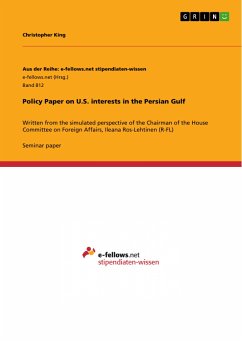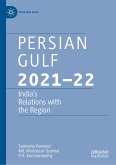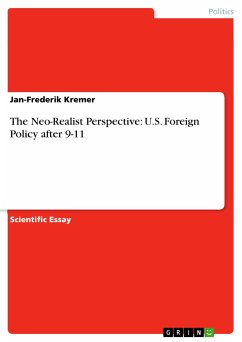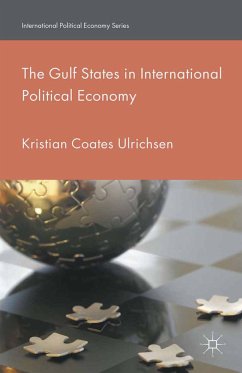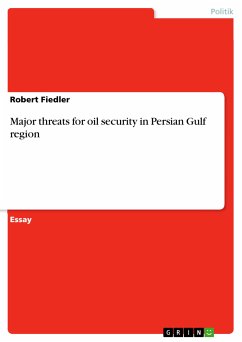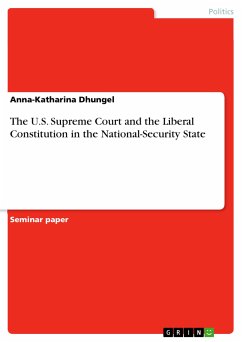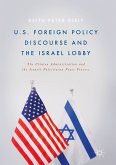Seminar paper from the year 2012 in the subject Politics - Region: USA, grade: 1,0, Indiana University (Department of Political Science), course: Comparative Foreign Policy – Persian Gulf Simulation, language: English, abstract: The Persian Gulf and its littoral states Iran, Iraq, Kuwait, Saudi Arabia, Bahrain, Qatar, UAE and Oman have witnessed several conflicts over the last decades. They have seen the Iran-Iraq war from 1980-1988 and the two Gulf Wars with U.S. involvement, that made the Persian Gulf a highly volatile region. Historically, the actions taken by America in the region have been driven by mainly two interests: First, ensuring a continued flow of oil exports of the countries and second, preventing a regional hegemon dominating the politics of the Persian Gulf. These interests had been brought to paper with the Carter Doctrine in 1980 in light of the growing assertiveness of the Soviet Union in the Persian Gulf. Since 9/11, there is also the interest of counterterrorism and today, another power after the Soviet Union tries to seize regional hegemony. The Persian Gulf is now home to a country ruled by a regime that wants to destroy the Israeli state and supports terrorist organizations like Hezbollah and Hamas to further destabilize the region. Furthermore, unrest or even clashes between Sunnis and Shiites in the Persian Gulf countries are possible as they are either majority or minority in a state and oppressed by the antagonistic ruling group. Iran is the main representative of the Shiites, while the GCC countries are ruled by Sunni leaders. The goal of this paper will be to show awareness of the problems in the Persian Gulf, address U.S. interests in the region, identify threats to these interests and provide policy recommendations in how the United States should pursue its Foreign Policy in the Persian Gulf. As this analysis is written through the lens of the Chairman of the House Committee on Foreign Affairs the Foreign Policy perspective drawn out in this paper shall check the Presidents policy and be ultimately determined by and for the interests and well-being of the American people.

